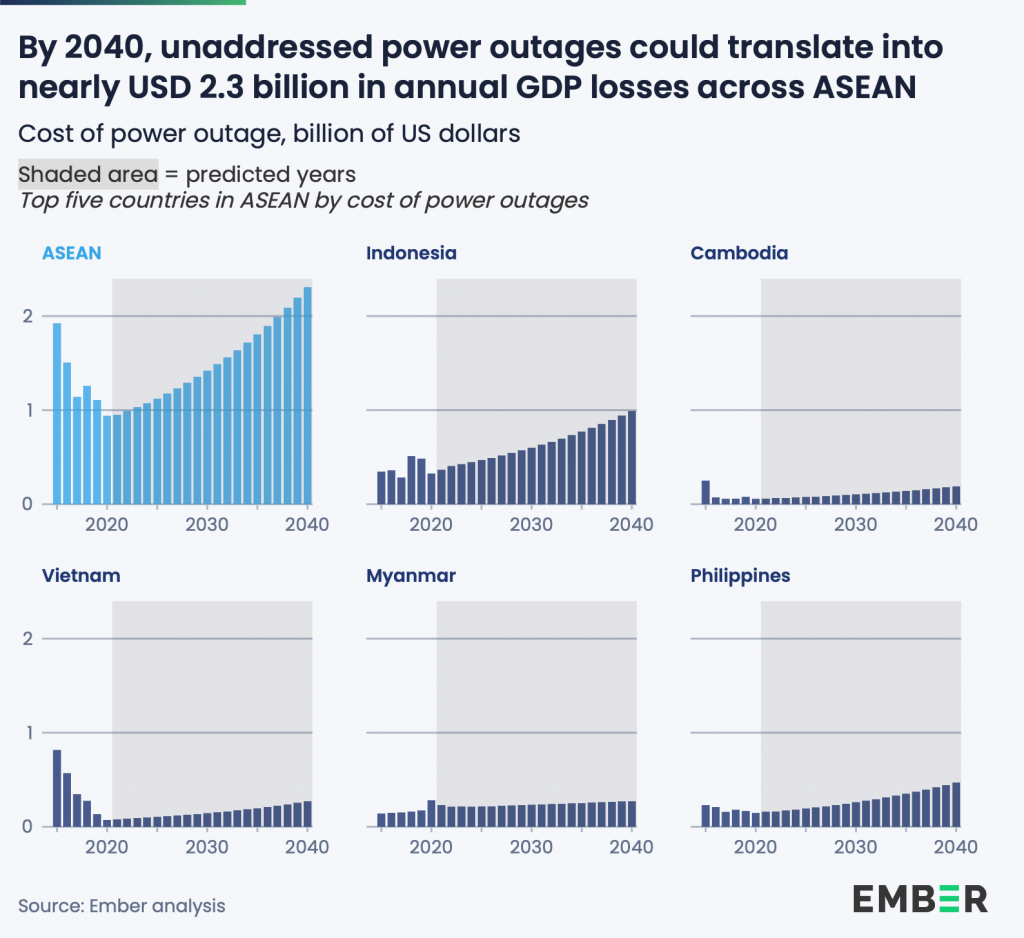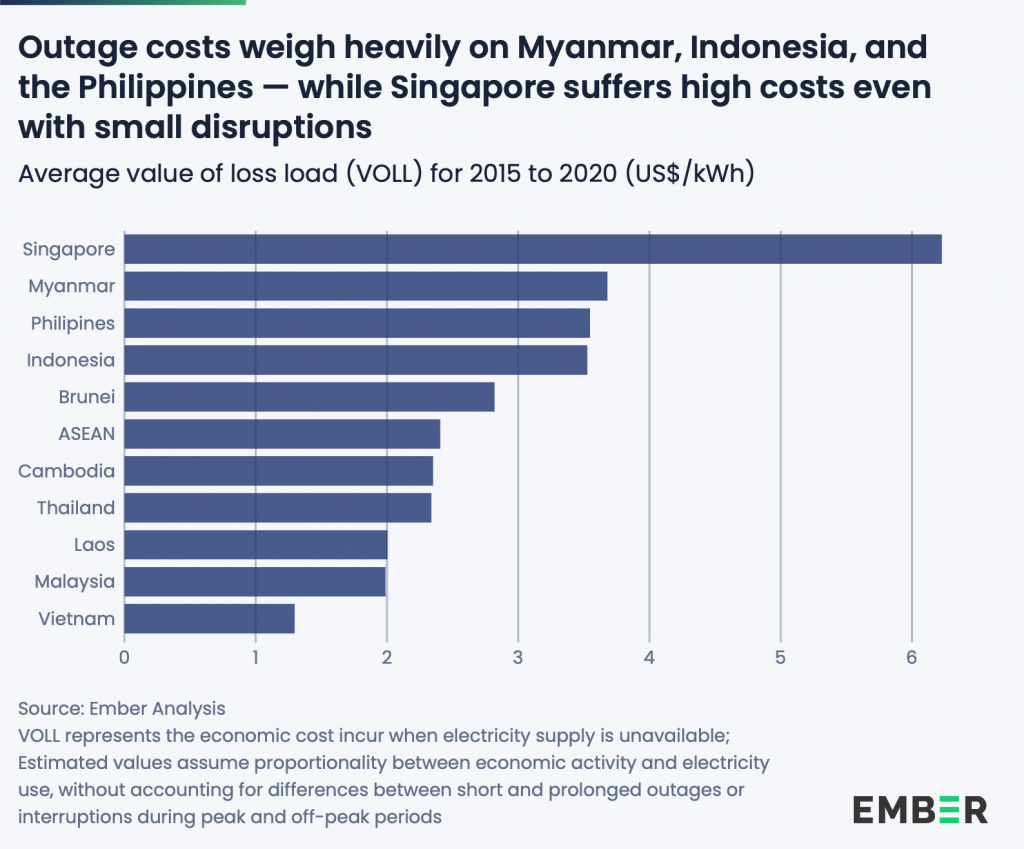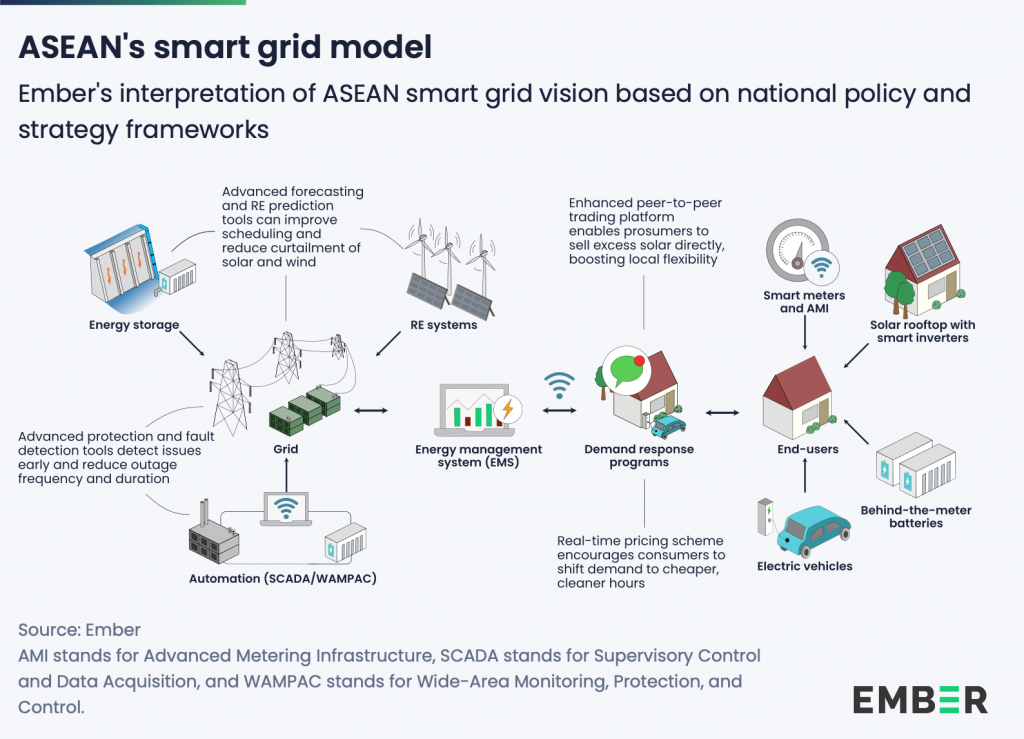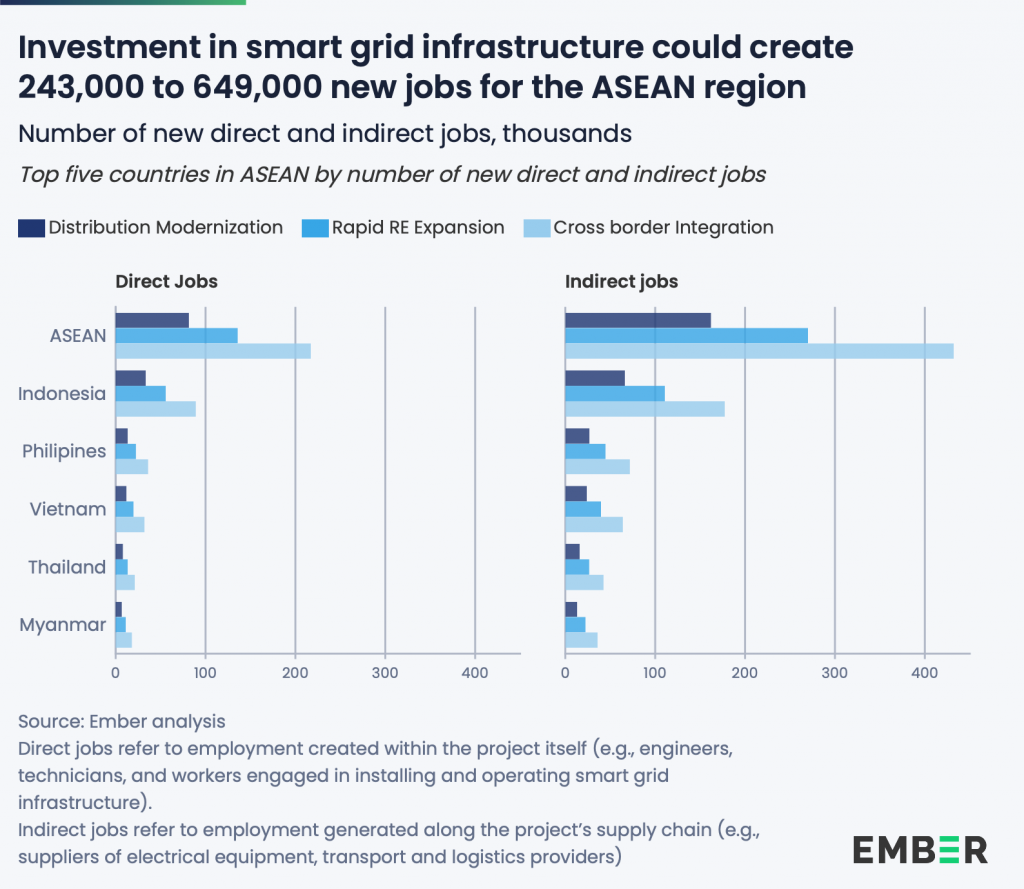ASEAN urged to modernize grids to avert USD 2.3B in losses by 2040
- October 14, 2025
- 0

The Association of Southeast Asian Nations (ASEAN) stands to avert as much as USD 2.3 billion in economic losses by 2040 through timely investments in smart grid infrastructure, according to a new report by energy think tank Ember.
The study, published on October 14, estimates that between USD 4 billion and USD 10.7 billion in investment will be needed to modernize Southeast Asia’s power networks and enable the integration of growing renewable energy capacity.

At the lower end of the range, about USD 4 billion would cover key system upgrades such as smart meters and automated controls to improve reliability and resilience. The upper range of USD 10.7 billion, Ember said, would fund a fully digitalized, interconnected power system capable of supporting large-scale clean energy deployment and cross-border electricity trade.
The report identifies Indonesia, Vietnam, and the Philippines as the countries with the highest investment needs due to frequent power outages and fast-rising demand. Singapore and Malaysia, meanwhile, have taken early strides in grid digitalization, demonstrating the benefits of long-term planning and coordinated policy support.

Ember noted that ASEAN has already reduced power outage duration and frequency by 60% between 2015 and 2020. However, it said further progress is constrained by financing gaps, uneven policy commitments, and fragmented standards across the region.

Smart grids combine sensors, automation, and digital forecasting to manage supply and demand in real time. Unlike traditional grid upgrades that simply expand capacity, they integrate generation, transmission, and consumption to enhance efficiency, flexibility, and renewable energy absorption.
“Smart grids are no longer optional — they are the backbone of ASEAN’s clean energy future,” said Alnie Demoral, Ember energy analyst. “Investing in smart grid infrastructure is both an energy transition enabler and a driver of economic and industrial competitiveness. Modern grids unlock the full value of renewable assets, strengthen industrial growth, and position ASEAN at the forefront of the global green economy.”
The transition could also generate between 243,000 and 649,000 new jobs across engineering, construction, and IT sectors, while reducing household energy costs and dependence on diesel generators.

Ongoing smart grid programs in Singapore, Malaysia, Thailand, the Philippines, Indonesia, and Vietnam are signaling growing regional momentum, from demand response initiatives to curtailment management and cybersecurity integration.
To accelerate deployment, the report recommends harmonizing standards, mobilizing financing, and fostering regional cooperation.
“Smart grids are an essential tool for meeting growing energy demands as well as managing increasingly complex energy systems in ASEAN and the wider Asia-Pacific region,” said Carlos Kuriyama, Director of the Policy Support Unit at the APEC Secretariat. “They offer opportunities in reducing waste and pollution while maximising the efficient use of energy infrastructure. Regional cooperation will be an essential tool for realising the full potential of smart grids.”
With growing electricity demand and renewable capacity across Southeast Asia, Ember said smart grid investments could help the region secure reliable power, enhance competitiveness, and sustain economic growth.
How should ASEAN governments and utilities prioritize smart grid investments to balance cost, reliability, and renewable integration? Join the discussion and share your insights.
Follow Power Philippines on Facebook and LinkedIn or join our Viber community for more updates.